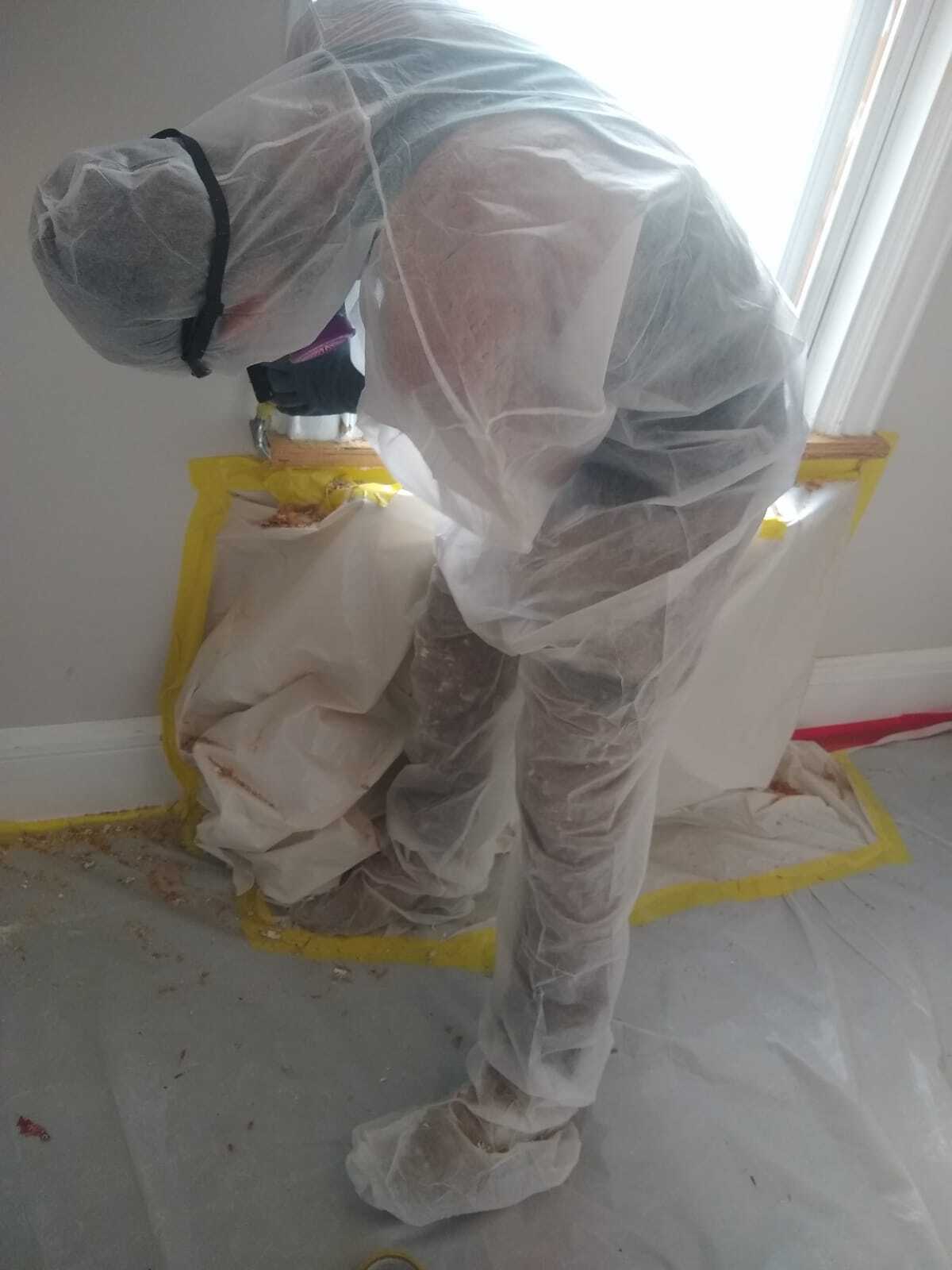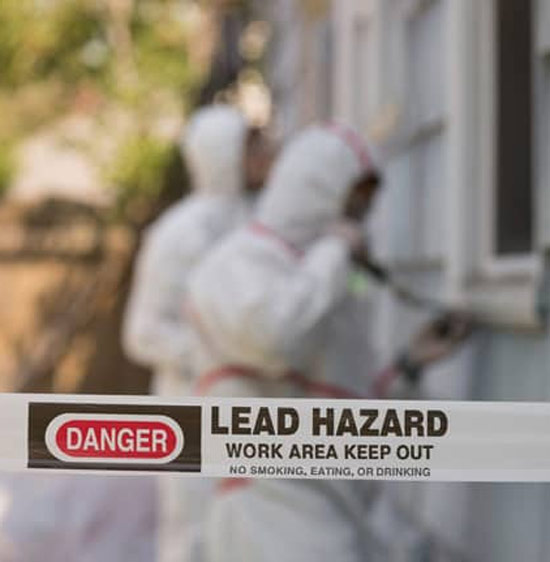Expert Lead Paint Removal Company-- Serving All NYC Boroughs
Expert Lead Paint Removal Company-- Serving All NYC Boroughs
Blog Article
Crucial Tools and Techniques for Efficient Lead Offense Cleaning
Addressing lead violations successfully demands a thorough technique that mixes the right devices with calculated techniques. The very first step involves gearing up employees with Personal Protective Tools (PPE) to protect their wellness. Concurrently, the use of specialized cleaning devices, such as HEPA vacuums and lead-specific cleaner, is necessary for complete contaminant removal. Efficient control techniques, consisting of plastic bed linen and negative atmospheric pressure systems, are important to prevent the spread of unsafe materials. Risk-free disposal practices and stringent adherence to regulative standards make sure liable handling of poisonous waste. What are the nuanced techniques that really make a difference?
Personal Safety Equipment
Personal protective equipment (PPE) is a crucial element in the reliable monitoring of lead contamination cleanup. PPE functions as an important barrier, securing employees from the hazardous effects of lead exposure, which can result in serious health and wellness consequences. The crucial PPE for lead cleanup includes respirators, protective clothing, gloves, and eye protection. Each type of devices is particularly created to minimize various dangers related to lead bits and dust.
Respirators, particularly those equipped with HEPA filters, are crucial for filtering system airborne lead fragments, avoiding breathing. Protective clothing, including coveralls and disposable matches, avoids lead dirt from adhering to employees' garments, decreasing the threat of second contamination.
In addition, extensive training on the correct use and upkeep of PPE is vital. Employees need to be enlightened on putting on and doffing treatments to avoid contamination. Normal inspections and substitutes of PPE parts are required to keep their protective capacities, ensuring a risk-free and certified cleanup operation.
Specialized Clean-up Tools

One more essential tool is the wet/dry vacuum cleaner, which can properly clean up both dirt and fluid pollutants. These vacuums typically include HEPA filters to offer an additional layer of security. Damp cleans or tack fabrics are likewise important for surface cleaning; they are specifically designed to record and hold lead fragments, minimizing the danger of spreading out contamination.
For even more stubborn deposits, specialized lead-removal cleaner are needed. These representatives are created to break down lead fragments, making them much easier to remove. Scrub brushes with sturdy bristles can help in this process, especially on harsh surfaces where lead dust has a tendency to adhere extra strongly.
In addition, encapsulants are made use of to seal lead-contaminated surfaces, preventing the release of lead dirt. These specialized paints and finishes are created to follow different substrates, offering a long-lasting service for lead control.
Effective Containment Techniques
Efficient containment approaches are essential in mitigating the spread of lead contamination during cleanup tasks. Executing durable control techniques makes certain that lead particles do not move to unaffected locations, therefore shielding both workers and the atmosphere (DOH & HPD Lead Violation Removal NYC).

To enhance containment, encapsulants can be put on surface areas that are not being eliminated or disturbed. These specialized finishings bind lead dirt, lowering its availability for resuspension. Additionally, all employees have to use suitable Personal Safety Equipment (PPE), including respirators and non reusable fits, to stop contamination spread.
Safe Disposal Practices
Ensuring safe disposal methods is a crucial part in the management of lead contamination clean-up. Correct disposal mitigates the threat of lead re-entering the atmosphere and jeopardizing public wellness. The very first step is to determine and segregate lead-contaminated waste from various other materials. Protected containment utilizing heavy-duty, watertight containers is necessary to stop splilling throughout transport.
Delivering lead waste requires adherence to stringent standards. Utilizing certified dangerous waste service providers makes sure that the products are taken care of properly. Documents, consisting of manifests detailing the kind and amount of waste, should come with deliveries to track the waste from the site of origin to its final disposal destination.
Designated contaminated materials disposal facilities are equipped to deal with lead-contaminated products securely. These centers usually utilize advanced techniques click such as stablizing, solidification, or chemical treatment to reduce the effects of the lead before disposal. Landfilling in specialized, lined areas that prevent leachate from contaminating groundwater is a typical method for final disposal.
Normal training for employees associated with lead garbage disposal is essential to preserve security standards and avoid accidental direct exposure. By adhering to these methods, companies can significantly reduce the environmental and health impacts related to lead contamination.
Regulatory Compliance Tips

Adhering to regulatory compliance is extremely important in the effective implementation of lead contamination cleanup. Understanding and adhering to federal, state, and local policies makes certain not only the safety and security and health of individuals but also the lawful and financial health of the clean-up company. The Environmental Defense Company (EPA) establishes strict requirements, such as the Lead Renovation, Fixing, and Paint (RRP) Policy, which mandates correct accreditation pop over to this web-site and training for service providers managing lead-based activities.
Compliance begins with a complete analysis of relevant legislations and laws. Organizations should remain upgraded on any type of legislative modifications, which can be promoted via normal training sessions and registering for sector updates. Documents is one more important compliance aspect; maintaining comprehensive documents of all tasks, consisting of examination reports, worker training logs, and disposal materializes, is vital.
In addition, engaging with certified lead examiners or risk assessors makes certain that lead hazards are properly recognized and mitigated. Companies have to impose the usage of Personal Protective Tools (PPE) and guarantee that safety methods are strictly adhered to. Lastly, clear communication with stakeholders, including workers, clients, and regulative bodies, will certainly promote a society of conformity and accountability, ultimately adding to a more secure and much more effective lead cleanup find procedure.
Verdict
Effective lead offense cleanup necessitates the integration of specialized devices and strategic methodologies to make certain safety and security and effectiveness. Personal protective devices (PPE) safeguards employees from exposure, while safe disposal practices and stringent adherence to regulatory conformity are necessary for sensibly managing dangerous waste.
Report this page